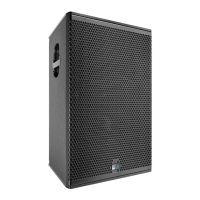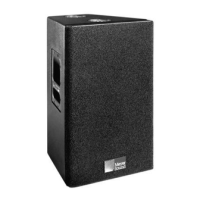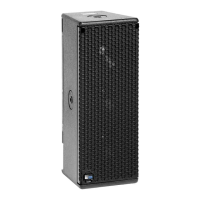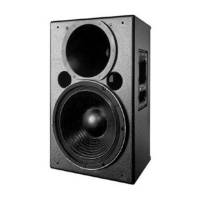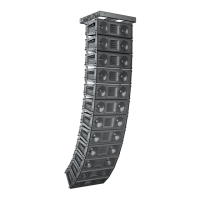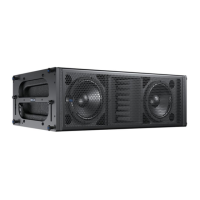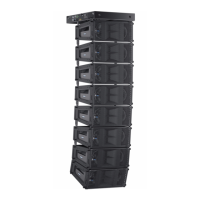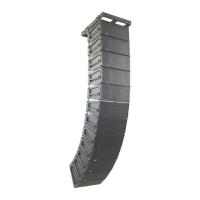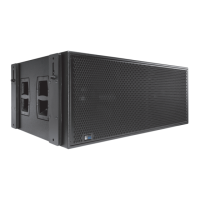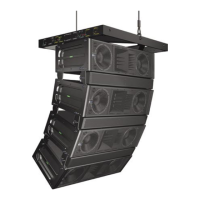15
CHAPTER 3: AMPLIFICATION AND AUDIO
The low- and high-frequency drivers in the UPQ-1P loud-
speaker are powered by a two-channel proprietary Meyer
Sound amplifier with MOSFET output stages. The audio sig-
nal is processed with an electronic crossover, correction fil-
ters for phase and frequency response, and driver
protection circuitry. Each channel has peak and rms limiters
that prevent driver over-excursion and regulate the tempera-
ture of the voice coil.
The user panel on the back of the UPQ-1P loudspeaker has
two slots for modules. The top slot contains an audio input
module (described in this chapter). The bottom slot is
reserved for the optional RMS module, used for connecting
to the RMS remote monitoring system (see Chapter 6, “The
RMS Remote Monitoring System”).
VEAM CABLING
The UPQ-1P loudspeaker can be ordered from the factory
with a VEAM all-in-one connector. VEAM connectors allow
you to consolidate AC power, audio, and RMS into a single
cable, facilitating easy connections and quick setups. For
more information, see Appendix A, “Optional VEAM Multipin
Connector.”
AUDIO INPUT MODULES
The UPQ-1P loudspeaker can be equipped with either of
two audio input modules: the Looping Audio Input module
or the Looping, Polarity, and Attenuating Audio Input mod-
ule. Both audio input modules have input and looping con-
nectors, and LEDs for monitoring temperature and limiting.
In addition, the Looping, Polarity, and Attenuating Audio
Input module has a switch for swapping the signal’s polarity,
and a knob for attenuating the input signal level to –18 dB.
The Looping Audio Input Module
The Looping Audio Input module includes the following con-
nectors and LEDs.
Input Connector
The female XLR Input connector accepts a balanced audio
signal with an input impedance of 10 kOhm. The connector
uses the following wiring:
Pin 1 — 220 kOhm to chassis and earth ground (ESD
clamped)
Pin 2 — Signal (+)
Pin 3 — Signal (–)
Case — Earth (AC) ground and chassis
Pins 2 and 3 carry the input as a differential signal. Pin 1 is
connected to earth through a 220 kOhm, 1000 pF, 15 V
clamped network. This circuitry provides virtual ground lift
for audio frequencies while allowing unwanted signals to
bleed to ground. Make sure to use standard, balanced XLR
audio cables with all three pins connected on both ends.
Telescopic grounding is not recommended, and shorting an
input connector pin to the case may cause a ground loop,
resulting in hum.
TIP: If unwanted noise or hiss is produced by
the loudspeaker, disconnect its input cable. If
the noise stops, there is most likely nothing wrong
with the loudspeaker. To locate the source of the
noise, check the audio cable, source audio, and AC
power.
Loop Connector
The male XLR Loop connector allows multiple UPQ-1P
loudspeakers to be looped from a single audio source. Con-
nect the Loop output of the first loudspeaker to the Input of
the second, and so forth. The Loop connector is wired in
parallel to the Input connector and transmits the unbuffered
source signal even when the loudspeaker is powered off.
To avoid distortion when looping multiple UPQ-1P loud-
speakers, make sure the source device can drive the total
load impedance of the looped loudspeakers. In addition, the
source device must be capable of delivering a minimum of
20 dBV (10 V rms into 600 ohms) to yield the maximum peak
SPL over the operating bandwidth of the loudspeaker.
Looping Audio Input Module

